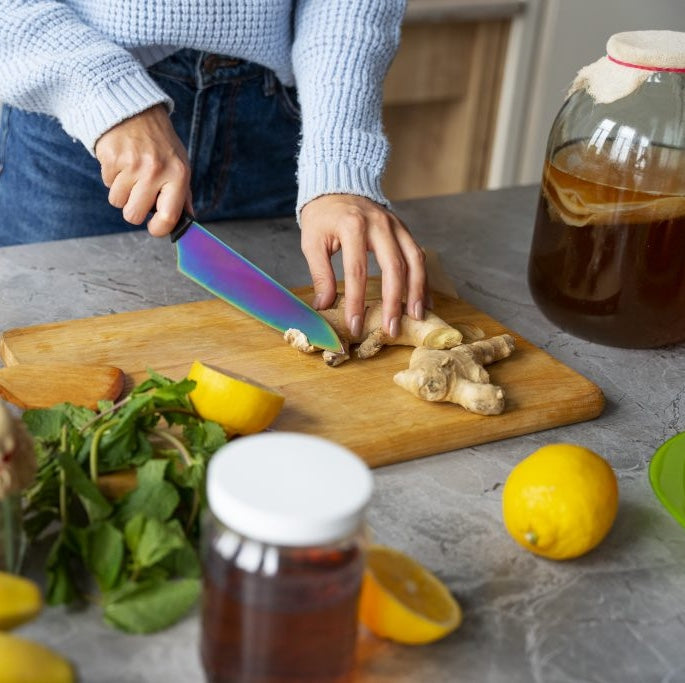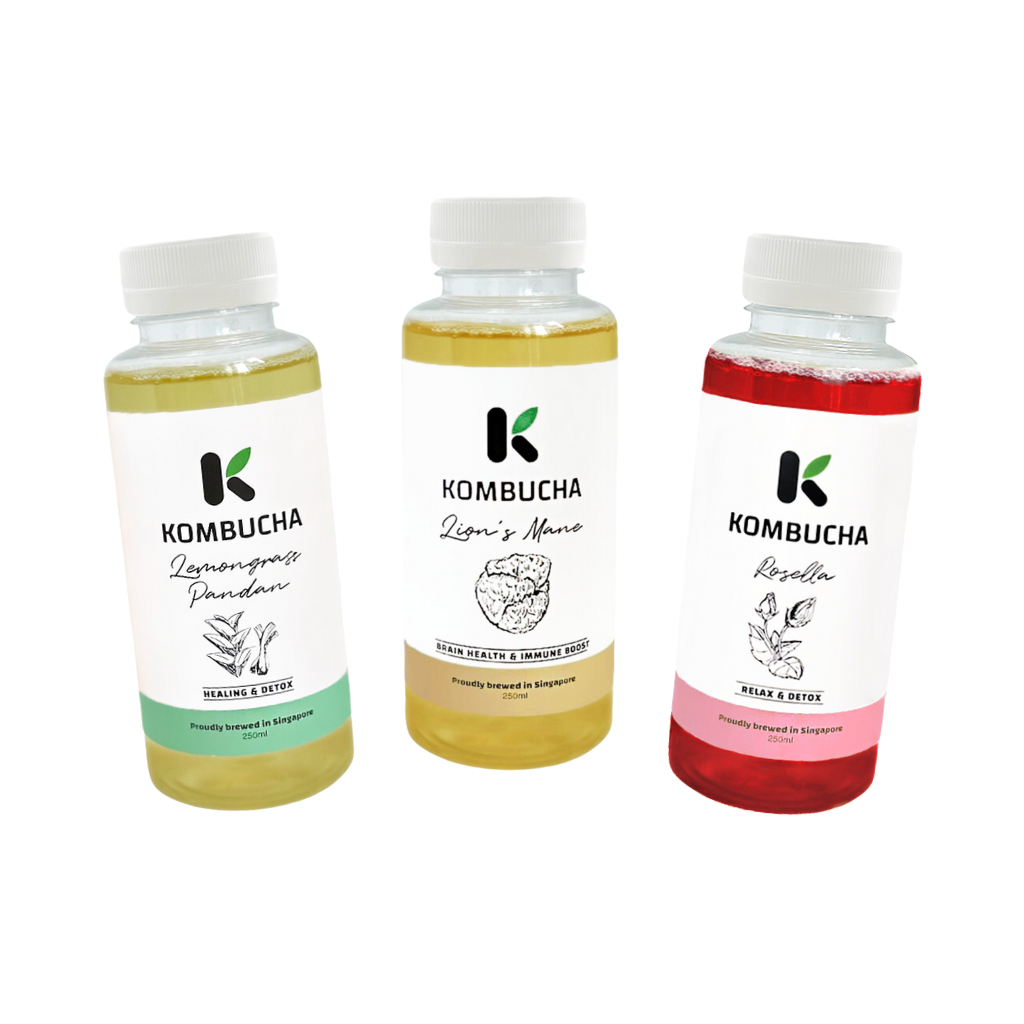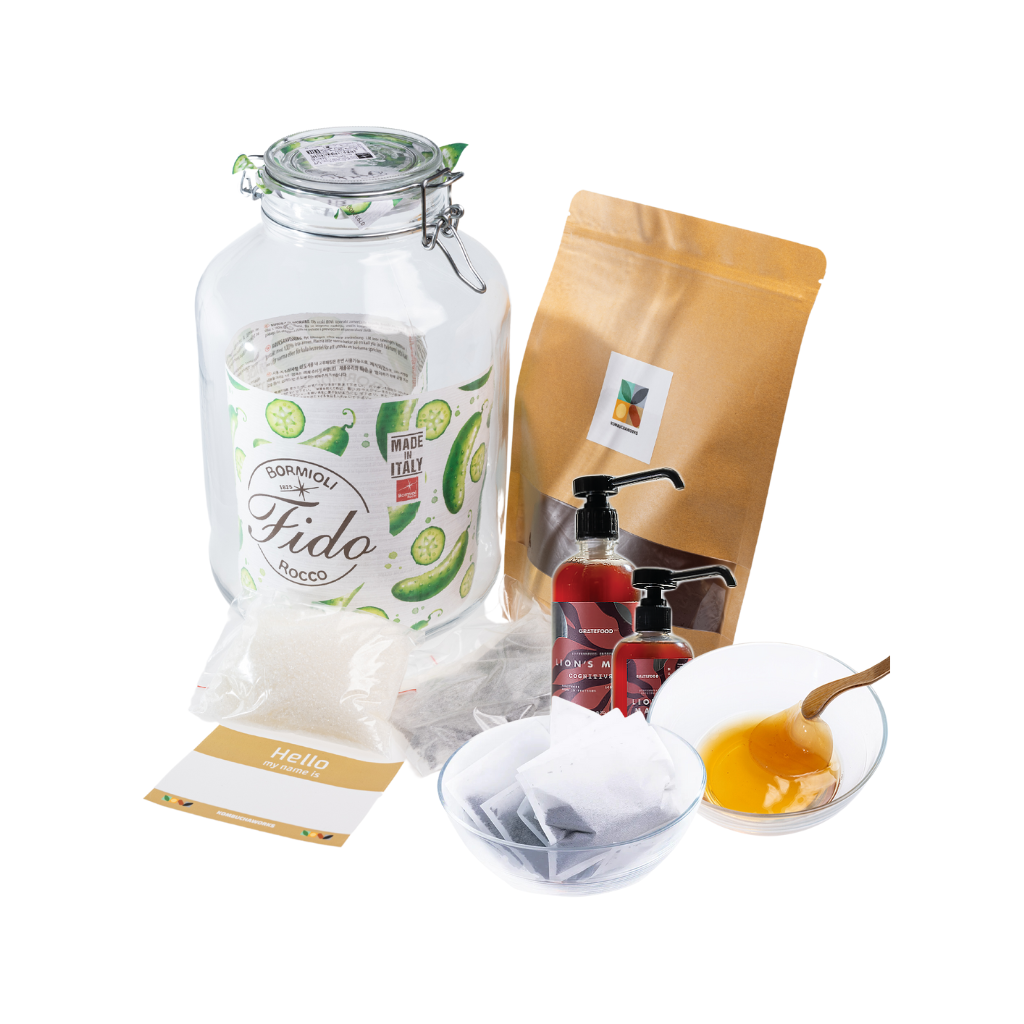Have you ever tried brewing your own kombucha? Most new kombucha makers get intimidated or discouraged by hurdles along the way. But there’s no need to worry, the right ingredients and materials can actually minimize your kombucha blunders.
Brewing your own kombucha is actually easier than it looks. This artisanal drink has five basic ingredients you can easily find at home or in stores. Here are some tips on what to look for in ingredients to make a successful kombucha brew.
WATER
Finding the right water for your kombucha is essential. Although distilled water may seem like a good idea, it is stripped of all minerals, which can be valuable in the fermentation process. If you still plan on using distilled water, make sure to remineralize it using Himalayan salt.
Filtered water is actually great for brewing kombucha as it is the most inexpensive. Tap water can also be used provided it is filtered or boiled. This helps remove chlorine or chloramines in the water.
Meanwhile, structured water or alkalized water should not be used in brewing because it could damage the culture.
TEA
The kind of tea you use in brewing your kombucha can affect both your SCOBY (symbiotic culture of bacteria and yeast) and the taste of your final product. Organic tea is best used so you can avoid having contaminants on your drink.
Black tea is the most recommended type of tea to keep a healthy SCOBY. It gives a bold and fruity taste to your kombucha. Earl Grey and black teas that contain oils and added flavourings should be avoided. These ingredients may cause a reaction with the kombucha, making your fermentation go bad.
Oolong tea also works wonders in keeping the SCOBY healthy. If you want a milder kombucha, opt for oolong tea which also gives a fruity and grassy flavour.
On the other hand, green tea gives your kombucha a light and soft flavour. You can use it alone or combined with black tea.
White tea can be used in later batches of kombucha, as well as red tea. Both give the drink a flowery flavour. White tea can be combined with black, green, or oolong tea, while red tea can be used with 25% black tea for flavouring.
You can also use decaffeinated tea for your kombucha.
SUGAR
Sugar is essential in making kombucha. It is what keeps your SCOBY alive and fermentation going. Nonetheless, it doesn’t mean you are going to consume all those sugar, it’s essentially what the yeast consumes. As such, the longer you ferment your kombucha, the less sugar is kept in it.
There are different sources of sugar you can use.
White cane sugar and organic cane sugar are excellent choices for brewing kombucha, — organic cane being the best. Honey, coconut, agave, maple, and palm syrups are not recommended as they can be inconsistent and hard on the SCOBY. The same goes for brown sugar, raw, whole cane sugar. Artificial sweeteners are also not recommended as they do not contain any nutrients for the SCOBY to survive.
One thing to remember though is that the stronger and healthier the culture, the faster they consume the sugar. So be mindful also of the other factors such as time, temperature and the bottles you use, as they all play a part in getting really fizzy kombucha.
STARTER TEA
In the kombucha brewing process, your starter tea has two purposes. It plays a critical part in the fermentation process by introducing yeast and bacteria into a fresh batch of sweet tea. Aside from that, it helps to lower the pH of the kombucha brew's beginning pH.
You can use a previously brewed kombucha. If you have no starter tea available, you can make use of store-bought, unflavored kombucha tea or white distilled vinegar.
Your starter tea is very important — the success of your brew depends on the quality of your starter tea. If you have a strong and healthy starter tea, it is great for a 1-gallon brew. It is good to have at least 4 quarts of sweet tea with 2 cups of starter tea.
SCOBY
SCOBY is a vital ingredient in making your kombucha. It is what helps ferment your drink. Other people make their own SCOBY but if you are one who wants to save time or don’t have any idea how to make one, you can also purchase a SCOBY Bag.
One thing that concerns most beginners is whether their SCOBY is still healthy or if it has already gone bad. Note that no two SCOBYs are going to exactly look alike — they are living organisms and each one is unique. Therefore, their shape and how they look shouldn’t matter. In fact, the shape is controlled by the shape of the brewing vessel and not the growth of microorganisms.
That said, adding flavour to your kombucha is optional. You can drink it as it is or add a preferred flavour. Think of your kombucha brewing as something like doing an experiment to see what fits your taste. Most brewers make use of fresh fruit purees of fruit juices or juice concentrates. For beginners, it is advised to add flavouring to kombucha during the second fermenting process. Here are some of the most common flavourings to use for your homemade brew.
Fresh fruit purees or juices
This is the most common flavouring used by brewers. Purees and juices make it easier for yeast to have access to sugar, leaving you with a fizzy drink. Using fresh fruit purees also results in a baby SCOBY (a new layer on top of your SCOBY).
Fresh or frozen fruit pieces
Bits and pieces of fruits can be added to your kombucha. It gives a subtle, mild flavouring. But note that the yeast on the drink will have a harder time consuming the sugar in fruit pieces, resulting in a lower carbonation level.
Fresh or dried herbs
Fresh or dried herbs can be used and paired with fruit flavours. Just be sure that the herbs are still fragrant or else your kombucha might end up smelling a bit odd.
Store-bought juices and canned fruits because it is easier to obtain, this is the most popular source of flavouring utilized by brewers.
Fruit preserves
If you don’t have access to fresh fruits, jams and fruit preserves can also be used. These preserves can be very concentrated so be mindful of the amount you’ll use.
Essential oils
Make sure the essential oils that you use are food-safe. Keep in mind also, that some essential oils also have antibacterial properties that can affect the good bacteria present in the drink.
Now that you know the best ingredients, it’s time to pick your options. Just remember that food safety and sanitation is crucial. Make sure to use sterile utensils and containers, and handwashing should be done properly.
If you're just getting started, you might want to check out our DIY Kombucha Brewing Kits — they include everything you need to begin brewing Kombucha! 😉





